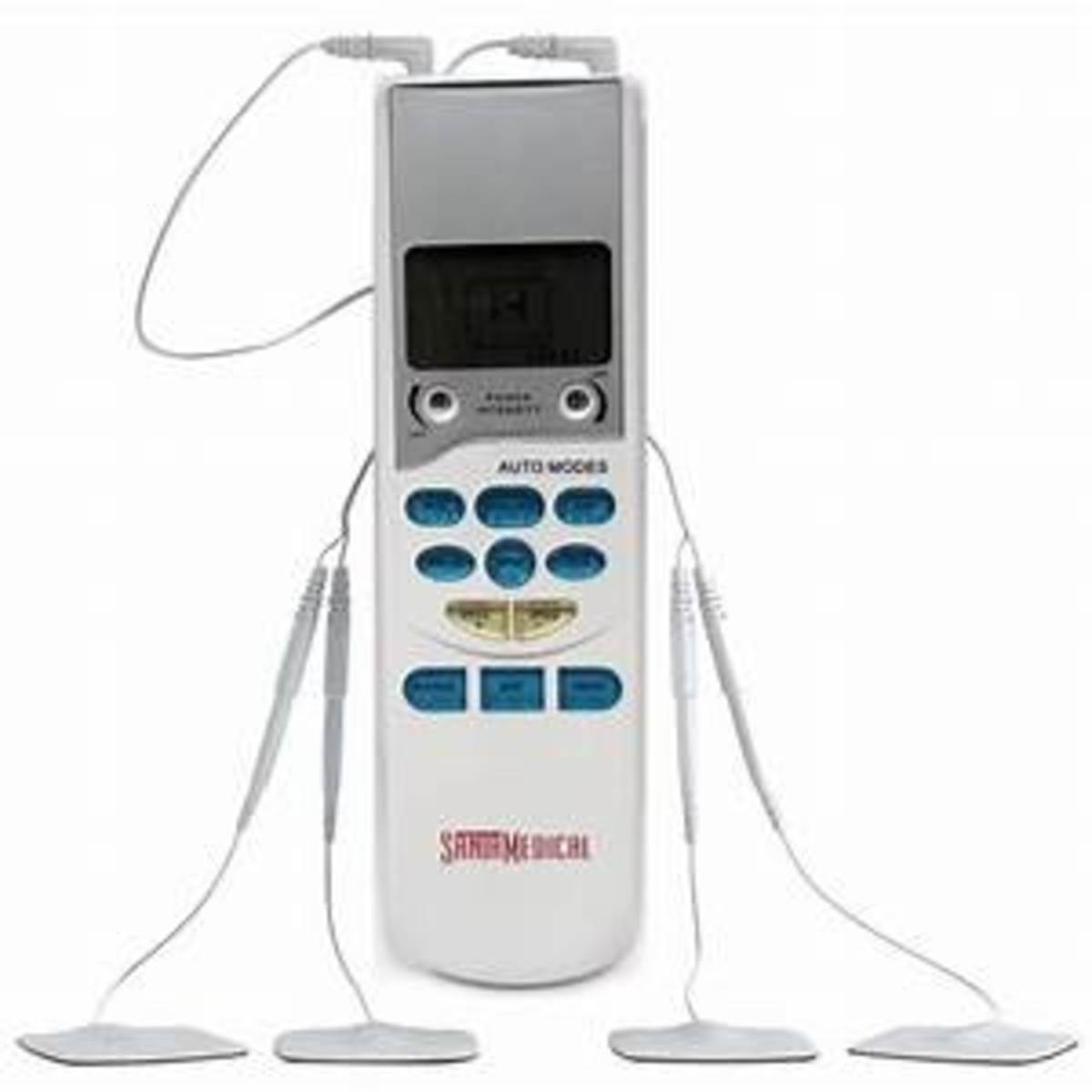TENS - Treatment For Pain

What is TENS?
TENS stands for Transcutaneous Electrical Nerve Stimulation. A TENS unit is a small handheld device that runs on batteries and produces a small electrical current with the intent of blocking pain. A TENS unit may be an effective pain management strategy and can be used as an alternative to medication is some cases. Using a TENS unit often allows the wearer to do more activity as pain may no longer be as overwhelming. It can be an important tool on the road to recovery from various illnesses, diseases, and pain.
How TENS Works
TENS works according to the Gate Control Theory of Pain as proposed by Melzack and Wall in 1965. The "gate" or pathway for pain to travel to the brain is usually closed, which inhibits and constant flow of input from the periphery. When a painful stimulation occurs, a specific fiber carries the information to cells that open the "gate" and your brain interprets pain. The theory hypothesizes that the signal carried from the TENS unit is faster than the pain carrying signal and therefore blocks the gate from opening. In doing so, your body does not interpret the pain and the wearer experiences relief.

Components of the TENS Unit
Most TENS units have 1 or more channels with lead wires connecting two electrodes. Each channel can be adjusted independently of the others to allow for optimal comfort and treatment of multiple areas. Most TENS units come with self adhering electrodes. These are attached to the skin and transmit the electrical signal.
The two primary adjustments of the TENS unit are Rate and Width. Rate refers to the number of pulses per second while width refers to the length of each individual pulse. These are most commonly adjusted in opposite directions with the rate usually from 2-200 Hz and the width 40-300 microseconds.
Intensity dials are commonly on the top of the unit and adjust the strength of the signal being sent to the tissue. Most often these control turning the unit on or off and are the last adjustment once rate and width are set.
Some models have various modes as well. Conventional, or Continuous mode sends and even signal to the body and feels the same over time. Sometimes the body can accommodate to the signal and the intensity feels decreased. Therefore, Burst and Modulate modes act to eliminate the body getting used to the signal. Burst mode send small packets of signal and the wearer may feel the signal more spread apart. Modulate does what the name implies, it changes or varies the signal so the wearer does not adapt.
Some units may also have a timer so that the unit with shut off after a set amount of time.
Burst
- Rate (Frequency): 70-100
- Width: 100-125
- Prevents accommodation
Modulation
- Rate (Frequency): 100
- Width: 100-150
- Prevents accommodation
Mode Selection
Conventional (High Rate):
- Rate (Frequency): 90-130
- Width: > 100
- May be worn continuously
Acupuncture Like (Low Rate):
- Rate (Frequency): 2-5
- Width: 200-250
- 30-60 minutes of wear maximum
Brief Intense
- Rate (Frequency): 90-130
- Width: 200
- May be used during a painful procedure or treatment
TENS Unit with Electrodes

Precautions
- Do not use a TENS unit if you have a pacemaker, metal in your body, or are pregnant.
- Do not use a TENS unit until your pain has been diagnosed by a physician.
- Do not use the TENS unit anywhere on the head or face, front of neck, internally, or on genitals.
Proper Use of a TENS Unit
- Ensure TENS unit is turned off.
- Plug lead wires into unit and attach the other ends to the electrodes.
- Place electrodes about 2 to 6 inches apart, surrounding the site of pain.
- Select which mode you will use and adjust accordingly.
- Slowly turn up the intensity to a comfortable level. The sensation should be strong and intense, but there should not be any pain or muscle twitching as a result of the TENS.

Where to Buy a TENS Unit
TENS units are often covered by health insurance. Seek the advice of your health-care professional to find out if a TENS unit is indicated and whether or not your insurance covers it. Units may be purchased at medical supply stores or online retailers without a prescription.
Other Indications for Use
TENS can be used for various types of pain. There is evidence to support use for myofascial pain, arthritic pain, incontinence, neurogenic pain, postsurgical pain, pain from organs, and sympathetic pain. Some studies are of poor quality, so the degree of effectiveness for these things is debatable.





